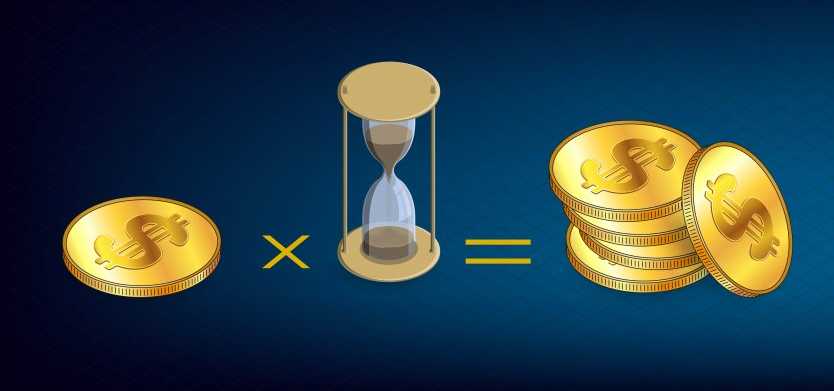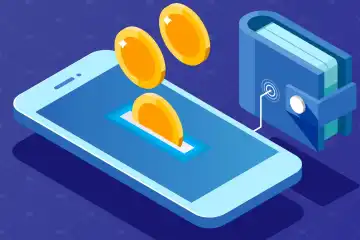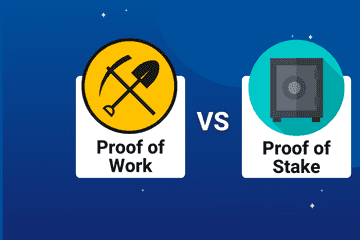If you are an NFT holder or a fan of the crypto world, you may have heard of NFT staking. NFT staking has become increasingly popular among crypto enthusiasts as it offers a way to earn passive income with your NFT holdings. In this article, we will explain what NFT staking is, how it works, and the pros and cons of staking your NFTs. We'll also provide a guide on how to earn passive income by staking your NFTs, and recommend some of the best NFTs to stake.
What is NFT Staking?
NFT staking is the process of holding your NFTs in a wallet or platform and locking them up for a certain period of time in exchange for rewards. When you stake your NFT, you're essentially contributing to the security and decentralization of the network, which is essential for the long-term success of the project. NFT staking is similar to traditional proof-of-stake (PoS) systems used in cryptocurrency, but instead of staking coins, you're staking unique digital assets.
How Does NFT Staking Work?
The process of staking NFTs varies depending on the platform or project you're using. In general, you'll need to have a designated wallet that supports NFT staking, such as MetaMask or MyEtherWallet. You'll then need to transfer your NFTs to your wallet and follow the staking instructions provided by the platform. This usually involves choosing the amount of time you want to stake your NFTs and the rewards you'll receive in return.
During the staking period, your NFTs will be locked up, meaning you won't be able to sell or trade them until the staking period ends. However, you'll earn rewards for contributing to the network, which can be in the form of additional NFTs or cryptocurrency. Once the staking period ends, you'll be able to claim your rewards and sell or trade your NFTs as you see fit.
What Are the Pros and Cons of Staking My NFTs?
Like any investment, staking your NFTs comes with both advantages and disadvantages. Here are some of the pros and cons to consider before staking your NFTs:
Pros:
- Passive income: Staking your NFTs can be a great way to earn passive income without having to actively trade or invest in the crypto market.
- Increased security: By staking your NFTs, you're contributing to the security and decentralization of the network, which can help ensure its long-term success.
- Additional rewards: Depending on the platform, you may be able to earn additional NFTs or cryptocurrency as rewards for staking your NFTs.
Cons:
- Lock-up period: When you stake your NFTs, you'll be unable to sell or trade them until the staking period ends. This can be a disadvantage if you need to access your NFTs for any reason.
- Project failure: Like any investment, there's a risk that the project you're staking your NFTs in may fail, resulting in a loss of your investment.
- Potential scams: As with any investment in the crypto world, there's always the risk of scams or fraudulent projects that can result in a loss of your investment.
All About Crypto Coin Staking Rewards
One of the biggest questions when it comes to staking NFTs is whether or not you can claim your rewards before the lock-up period ends. Unfortunately, the answer is usually no. Staking NFTs often requires a lock-up period of several weeks or even months, during which time you won’t be able to sell or transfer your NFTs. This means that you won’t be able to claim your staking rewards until the lock-up period is over.
However, some platforms may offer a way to earn rewards without locking up your NFTs. For example, some platforms offer liquidity staking, where you can stake your NFTs and earn rewards without actually locking them up. While this may sound appealing, it’s important to remember that these types of staking programs are often less lucrative than traditional staking programs with lock-up periods.
How to Earn Passive Income Staking NFTs?
Staking NFTs can be a great way to earn passive income, but it’s important to understand how it works before you get started. When you stake your NFTs, you’re essentially locking them up for a certain period of time in exchange for rewards. These rewards can come in the form of additional NFTs or other cryptocurrencies, depending on the platform.
To earn passive income by staking NFTs, you’ll need to find a platform that supports NFT staking. Once you’ve found a platform that you like, you’ll need to deposit your NFTs and stake them for a certain period of time. During this time, you’ll earn rewards based on the amount of NFTs you’ve staked and the duration of the lock-up period.
What Are Some NFT Staking Platforms?
As NFTs continue to gain popularity, more and more staking platforms are emerging to meet the growing demand for NFT staking. Here are some of the top NFT staking platforms to consider:
Rarible
Rarible is a popular marketplace for buying and selling NFTs, but it also offers a staking program for its RARI token. Stakers can earn rewards in the form of RARI tokens, which can be used to vote on platform decisions and access other perks.
Niftyx Protocol
Niftyx Protocol is a decentralized platform for staking and trading NFTs. Users can stake their NFTs and earn rewards in the form of the platform's native token, NIFTYX.
Unicly
Unicly is a platform for fractionalizing and staking NFTs. Users can stake their NFTs and earn rewards in the form of the platform's native token, UNIC.
Aavegotchi
Aavegotchi is a decentralized game that allows users to collect, breed, and battle NFT creatures called "gotchis." Users can stake their Aavegotchi NFTs and earn rewards in the form of the platform's native token, GHST.
Binance
Binance is a popular cryptocurrency exchange that also offers NFT staking programs for several NFT tokens, including Axie Infinity and The Sandbox. Stakers can earn rewards in the form of the platform's native token, BNB.
Bondly
Bondly is a decentralized platform for buying and selling NFTs, but it also offers a staking program for its BONDLY token. Stakers can earn rewards in the form of BONDLY tokens and access other perks, such as early access to new releases.
Polkamarkets
Polkamarkets is a decentralized platform for trading prediction market NFTs. Users can stake their PMT tokens and earn rewards in the form of the platform's native token, POLK.
These are just a few examples of the many NFT staking platforms available. It's important to do your research and choose a platform that supports the NFTs you own or are interested in staking, and that offers competitive rewards and a lock-up period that works for your investment goals.
What Are the Best NFTs to Stake?
The best NFTs to stake are those that have a high potential for value appreciation, as well as attractive staking rewards. Here are some of the most popular NFTs to stake:
- Axie Infinity (AXS): Axie Infinity is one of the most popular blockchain games that allows players to collect, breed, and battle fantasy creatures called Axies. The game has gained a huge following, with players from all over the world earning rewards for playing the game. The native token of the game, AXS, is used for staking and governance, and it offers attractive staking rewards for those who participate in the network.
- Rarible (RARI): Rarible is a decentralized marketplace for buying and selling NFTs. It offers a staking program for its native token, RARI, which allows users to earn rewards for holding and staking their tokens. The platform also offers governance rights to its stakers, allowing them to participate in the decision-making process of the platform.
- Aavegotchi (GHST): Aavegotchi is a blockchain-based game that combines NFTs with DeFi. Players can buy and trade Aavegotchi ghosts, which are unique digital creatures that can be staked to earn rewards. The game has gained a lot of popularity, and the native token GHST has seen a significant increase in value, making it an attractive option for staking.
- The Sandbox (SAND): The Sandbox is a decentralized gaming platform that allows users to create, share, and monetize their own gaming experiences. The platform has its own virtual world, and users can buy and sell virtual land and assets using the SAND token. Staking SAND tokens allows users to earn rewards and participate in the governance of the platform.
- Decentraland (MANA): Decentraland is a virtual world where users can create, experience, and monetize their own content. Users can buy virtual land using the MANA token, and they can also stake their tokens to earn rewards. The platform has seen significant growth in recent years, making it an attractive option for staking.
These are just a few of the many NFTs available for staking. It's important to do your own research and choose NFTs that align with your investment goals and risk tolerance. Additionally, keep in mind that the NFT market can be volatile, so it's important to diversify your portfolio and only invest what you can afford to lose.
Conclusion
NFT staking is a relatively new concept in the crypto world, but it has quickly gained popularity among NFT holders. By staking your NFTs, you can earn passive income while contributing to the security and decentralization of the network. However, staking your NFTs also comes with risks, such as the lock-up period and the potential for project failure. It's important to carefully research and choose the best NFTs to stake, and to use reputable NFT staking platforms. Overall, NFT staking can be a rewarding way to earn passive income in the crypto world.
It's worth noting that NFT staking is a fast-growing market, and new projects and platforms are emerging all the time. If you're interested in NFT staking, it's important to stay informed about the latest developments and to choose the best options for your investment goals. To make the process of staking NFTs easier, consider using Stakeme.io, a platform that offers staking for a variety of NFT projects with yields of up to 77% APR. With Stakeme.io, staking your NFTs is just a few clicks away.



